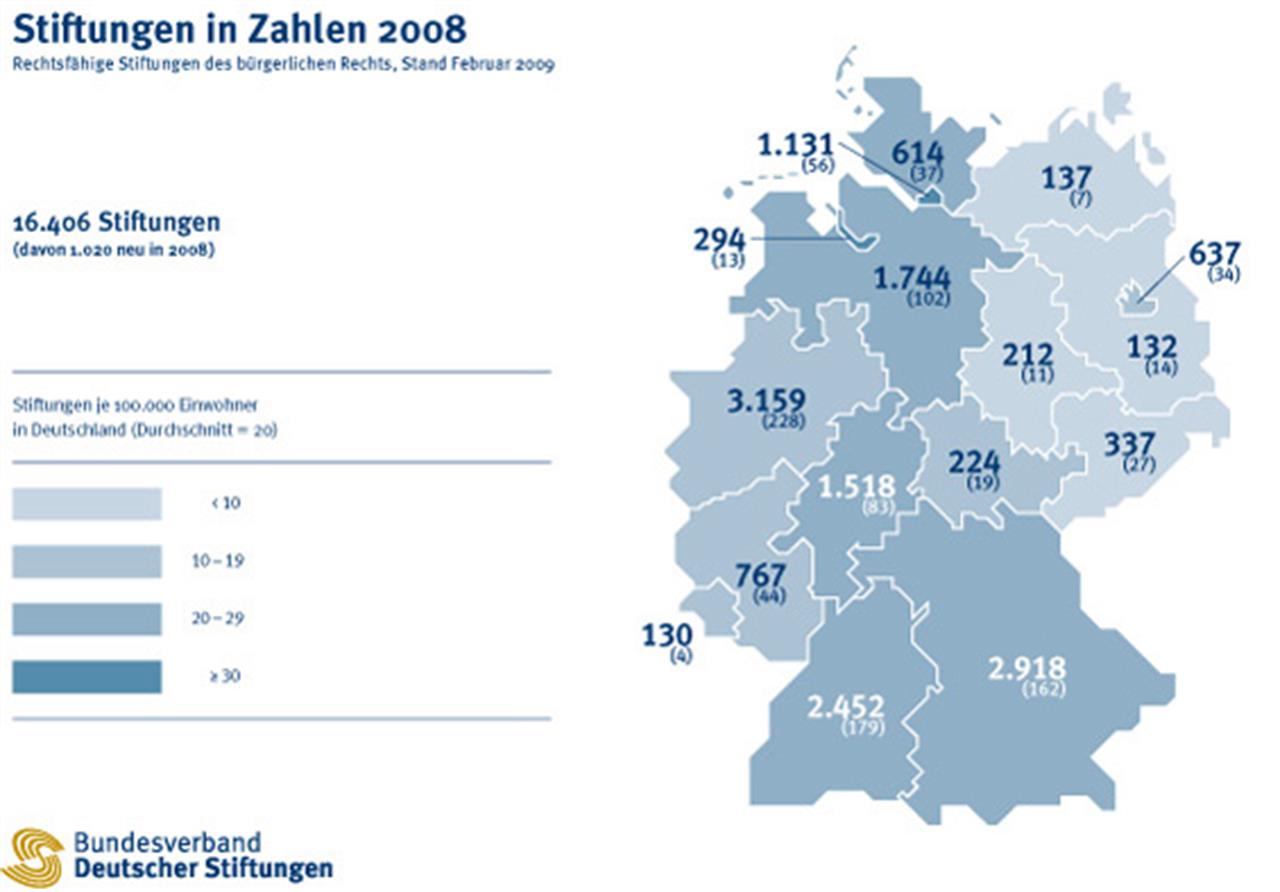The non-profit sector is a substantial economic force in Germany, as far as both expenditures and employment are concerned. In fact, if the German civil society was a country, its GDP would be 2.2 trillion $ for Germany (approximately 1.7 trillion €), far above the 1.3 trillion $ average (approx. 1 trillion €) of the all 35 countries analyzed in the Global Civil Society – An Overview Report (1995 data; source: Lester M. Salamon, S. Wojciech Sokolowski, Regina List, Global Civil Society – An Overview, The Johns Hopkins Comparative Nonprofit Sector Project, 2003).
There are different types of organizations active in the German third sector:
– registered associations: they amount to 554,401 units (Summer 2008 data; source: Vereinsstatistik 2008 – Statistics of Associations 2008, produced by the V&M Service GmbH with the collaboration of the Research Institute for Sociology at the University of Cologne, 2008);
– cooperatives: data are delivered by the German Cooperative and Raiffeisen Confederation (DGRV), according to which the cooperatives in Germany are 5,291, as of 31st December 2007, with approximately 17.6 million members spread across them;
– foundations: they amount to 16,406 units (2008 data; source: Stiftungen in Zahlen – Errichtungen und Bestand rechtsfaehiger Stiftungen des beurgerlichen Rechts in Deutschland im Jahr 2008, Association of German Foundations, published in 2009), of which 1,020 established in 2008 (see figure); as shown in the figure, the German cities with the highest foundation density (the first three are Frankfurt am Main, Wuerzburg and Hamburg) belong to the former West Germany (see figure. For the German legislation regarding foundations: http://www.efc.be/ftp/public/eu/CountryProfiles/germany.pdf; in particular, as reported in this European Foundation Centre‘s report, to read the Foundation laws of the different German regions: www.stiftungsgesetze.de).
By field of activity, in Germany the 38.8% of non-profit organizations are active in social services, the 30.6% in the health sector and the 11.7% in the educational field (1995 data; source: Annette Zimmer Ed., The Third Sector in Germany, Münsteraner Diskussionspapiere zum Nonprofit-Sektor, Sonderband 3 – Arbeitsstelle Aktive Bürgerschaft at the Institute for Political Science, Westphalian Wilhelms-University of Münster, 2000).
Sources of income
The Global Civil Society – An Overview Report (Salamon et al., 2003; 1995 data), highlights that the sources of civil society organization revenue without considering volunteers are the following:
– 64.3% from the government;
– 3.4% from philanthropy;
– 32.3% from fees and charges for the services that these organizations provide and the related commercial income they receive from investments and other commercial sources, including dues.
According to the same Report, the respective percentage as far as the third sector with volunteers is concerned are instead the following:
– 42.5% from the government;
– 36.2% from philanthropy;
– 21.3% from fees.
Vuoi accedere all'archivio di VITA?
Con un abbonamento annuale potrai sfogliare più di 50 numeri del nostro magazine, da gennaio 2020 ad oggi: ogni numero una storia sempre attuale. Oltre a tutti i contenuti extra come le newsletter tematiche, i podcast, le infografiche e gli approfondimenti.

